At the same time that Tyrannosaurus rex ruled North America, Majungasaurus was the apex predator of Madagascar, basically filling the same niche as the tyrant lizard on the other side of the world. But Tyrannosaurus was a 40’ (12 meter) long predator that could swallow a human whole, while Majungasaurus maxed out at around 23’ (7 meters) and could have looked you in the eye. It’s difficult to imagine just how small Majungasaurus was when you’ve only ever seen it in documentaries like Prehistoric Planet and Jurassic Fight Club, without anything modern for scale. Although I am not a scale conscious collector, being one is the best way to get a bead on the size of things from the comfort of your own home.

The Haolonggood Majungasaurus is a just a tiny guy, measuring 9” (22.86 cm) long and standing 2.25” (5.72 cm) tall at the hip. The head is about the same size as my thumbnail, and its foot could stand comfortably on an American dime. To get a scale of 1/35 the figure would have to be scaled down from an animal measuring about 26’ (8 meters). Fragmentary remains of large Majungasaurus specimens suggest that they did reach this size, but more conservative estimates put it at 18-23’ (5.6-7 meters). Scaled down from a length of 18 feet the figure is 1/24 in scale. Given the small size of the figure, it’s no surprise that Haolonggood chose to scale it down from the maximum estimated length.

Since I already have the Safari Majungasaurus in my collection, I didn’t really need another representative of the genus but there are a few attributes this figure has that I couldn’t ignore. One of them is the pose. Majungasaurus is an oddly proportioned animal, with a long neck, torso, and tail, virtually non-existent forelimbs, and short legs. It is lovingly referred to as a sausage (or hotdog) with legs within our community. That makes it a hard animal to balance in toy form, I assume, and Safari got around that by twisting theirs into a somewhat unlikely posture that admittedly balanced the figure well.
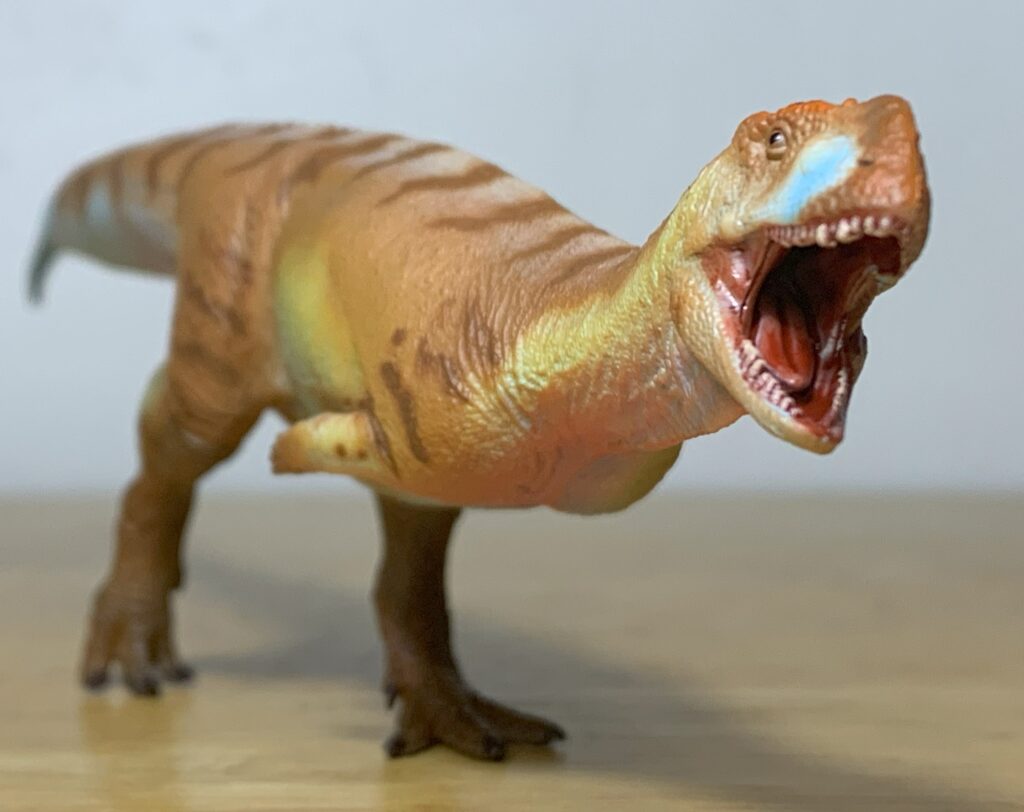
For this figure, Haolonggood has the entire body straightened with the tail base slightly elevated, the torso dipping down, and the head lifting back up and level with the hips. The feet are spaced far enough apart in mid-stride that they support the heaviest parts of the figure, the hips and torso, and the figure is remarkably stable as a result. It’s a marvel of dinosaur toy engineering!
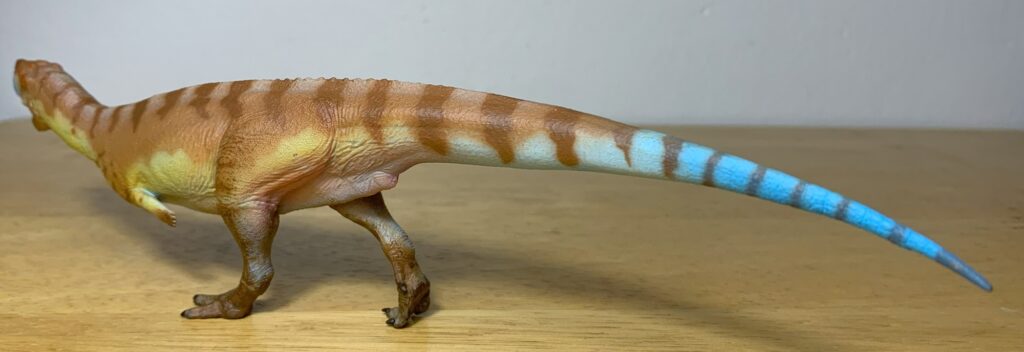
The skull is appropriately short and deep, and wider than that of its cousin, Carnotaurus. The dorsal surface of the snout has a thick ridge, and a small horn sits atop the head and between the eyes. The mouth is meticulously detailed with minute, tightly packed teeth, and nasal openings can be seen on the roof of the mouth. There’s also a sculpted tongue and the back of the throat is beautifully detailed. Labial scales can be seen along the lips and large scales are clustered around the orbits. A wrinkled dewlap stretches along the underside of the neck.
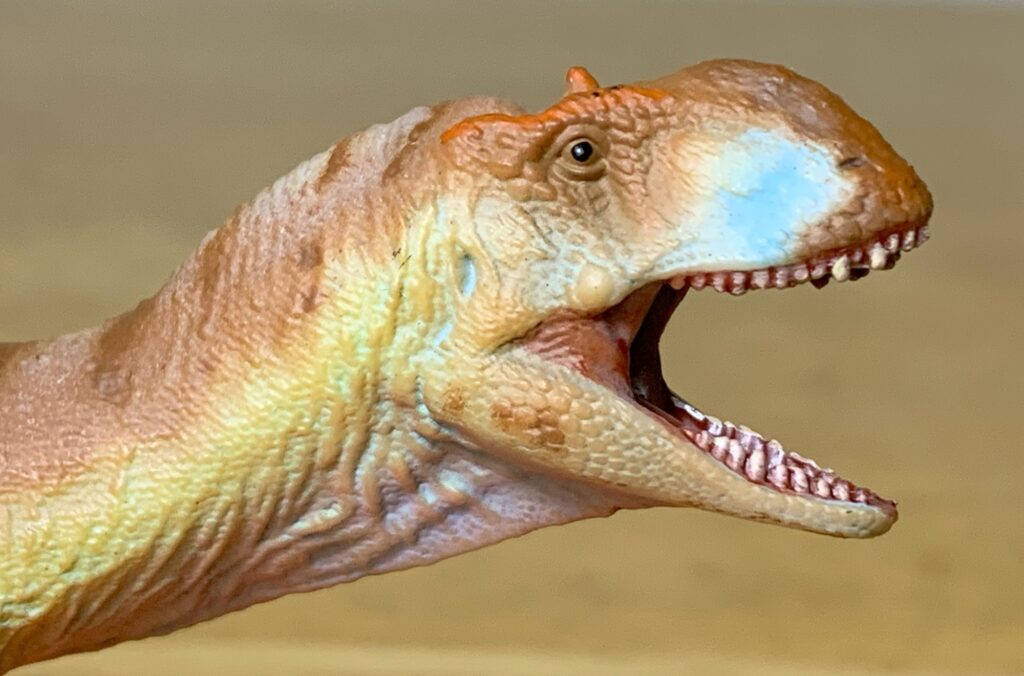

Instead of fine scales the skin is detailed with a wrinkled and pitted texture, but large feature scales can be seen scattered about. They’re similar to the randomly placed feature scales we see on Carnotaurus skin impressions. Scutes can be seen running down the fingers and toes, and a row of spines runs over the hips and tail base. The claws on the toes are very refined and sharp. Nice muscle definition is sculpted around the shoulders, legs, and base of the tail.
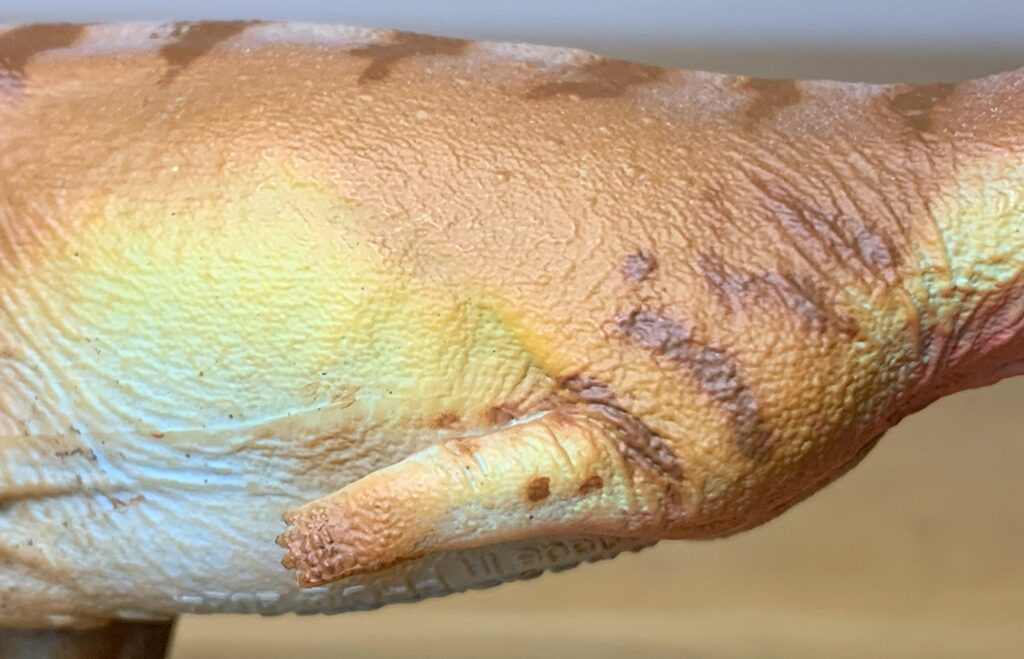
The arms are appropriately puny and orientated straight backwards, as if the Majungasaurus is trying to do a pitiful Naruto run. The actual Majungasaurus had a short, curved humerus, and an exceptionally short radius and ulna that made the elbow immobile. Four clawless digits are sculpted on the hands and in life the finger bones were fused together and immobile, and possibly clawless. There were no wrist bones and the metacarpals attached directly to the forearm. Pop culture likes to pick on T. rex for its small arms, but they were at least fully functional, abelisaurid arms are far more pathetic. It seems reasonable to assume that they may have lost their arms entirely had they not gone extinct.

The Haolonggood Majungasaurus comes in two different colors, as usual. Deng Fei is blue/gray while Ou Peng is predominantly orange/yellow and the latter’s paintjob is a major selling point of this figure. This is one of my absolute favorite paintjobs on any dinosaur toy. The patterning is typical, stripes down the back, but the color choices and blending of them are truly inspired.


Ou Peng is dull orange in color along the back, down the shoulders, and on the front of the legs. A hazy stripe runs down the midline of the back and ochre stripes run down along the sides, arms, and front of the legs. On the arms they transition to spots. The tip of the snout and the ridge over it, and the brows and horn, are vibrant orange. Electric blue is painted over the antorbital fenestra, approximately, and there’s an electric blue wash over the sides of the neck that travels along the underside of the jaw, neck, belly, and tail where it connects to an entirely electric blue tail tip, with ochre stripes that transition to bands that wrap around the tail tip.

In addition to the electric blue there’s also hot pink running down the jaw, throat, and the underside of the arms. More hot pink highlights the cloaca region and back of the legs, where there’s some more of the blue wash as well. Between the orange portions of the body and the colorful underside there’s a bright yellow band that travels from the neck to the hindlimbs. The hands are tipped in orange, and the feet are so dark that they’re almost brown. The teeth are white with a glossy red wash, and the inside of the mouth is glossy red and pink. The eyes are simple glossy black spots.
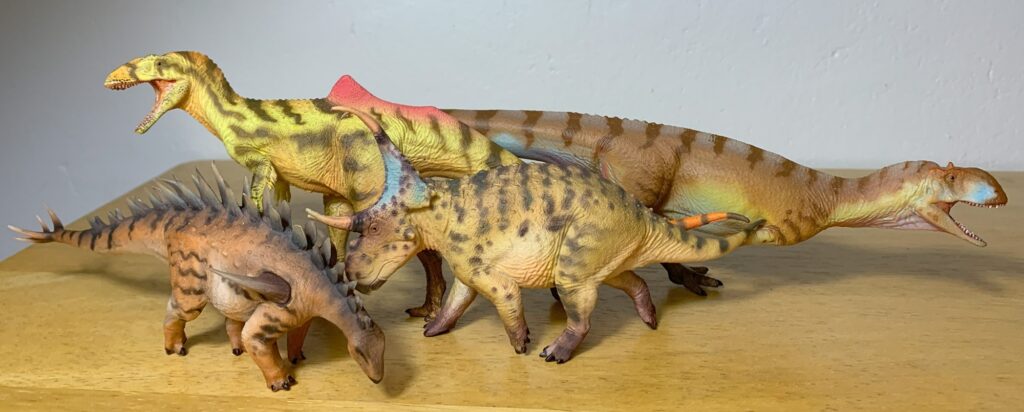
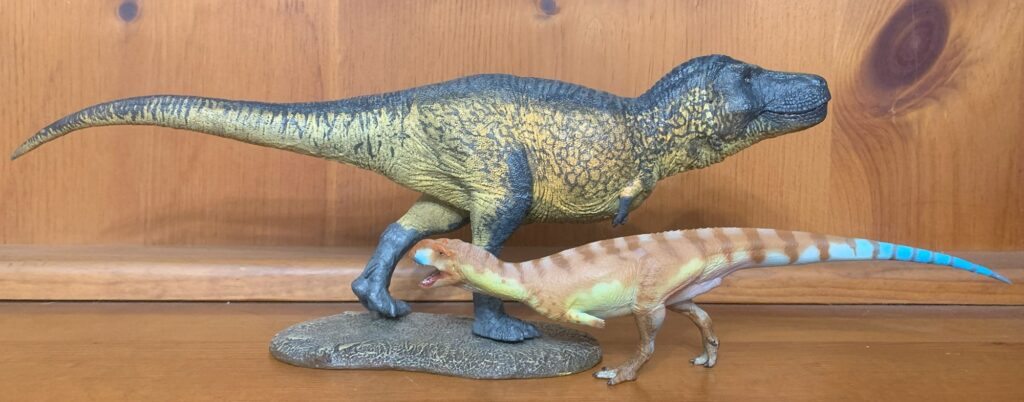
This paintjob is extraordinarily complex and unique. I love that the most vibrant parts of the body are mostly hidden along the underside, similar to how a lot of lizards have naturalistic dorsal coloration but vibrant undersides for display. It’s easy to imagine that this dinosaur could be camouflaged when it needed to hunt, but eye catching when searching for a mate. My only issue with the paintjob is that there’s a bit of asymmetry going on, with most of the pink coloration on only the right underside of the figure.
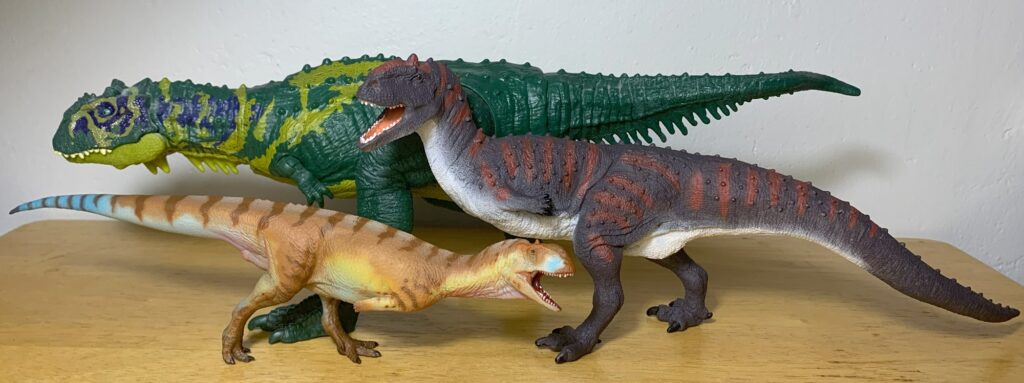

The Haolonggood Majungasaurus is one of the company’s best theropods to date. As far as I can tell it’s practically flawless, and I’m astonished by what they were able to achieve at such a small size. Its stability and exceptional paintjob made it a must have for me. This figure is widely available online for about $24.
Disclaimer: links to Ebay and Amazon on the DinoToyBlog are affiliate links, so we make a small commission if you use them. Thanks for supporting us!




Beautifully detailed figure, especially for its size. Abelisaurs are curious creatures. The reasons often cited for T. rex having small arms are that it was to reduce weight so the head could grow larger or that they were small to avoid injury to the arms during fights (which i think is a dumb theory). But abelisaurs didn’t have big heads, so why did their arms all but vanish? You’d think reasonable size arms would be advantageous, for grooming if nothing else. Yet they evolved into useless little stumps.
Thanks for the review.